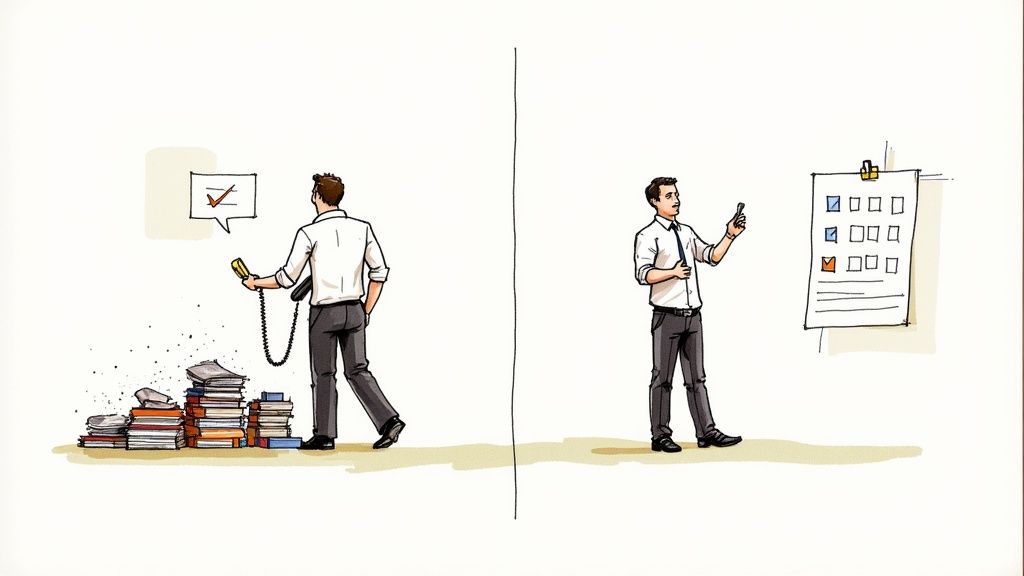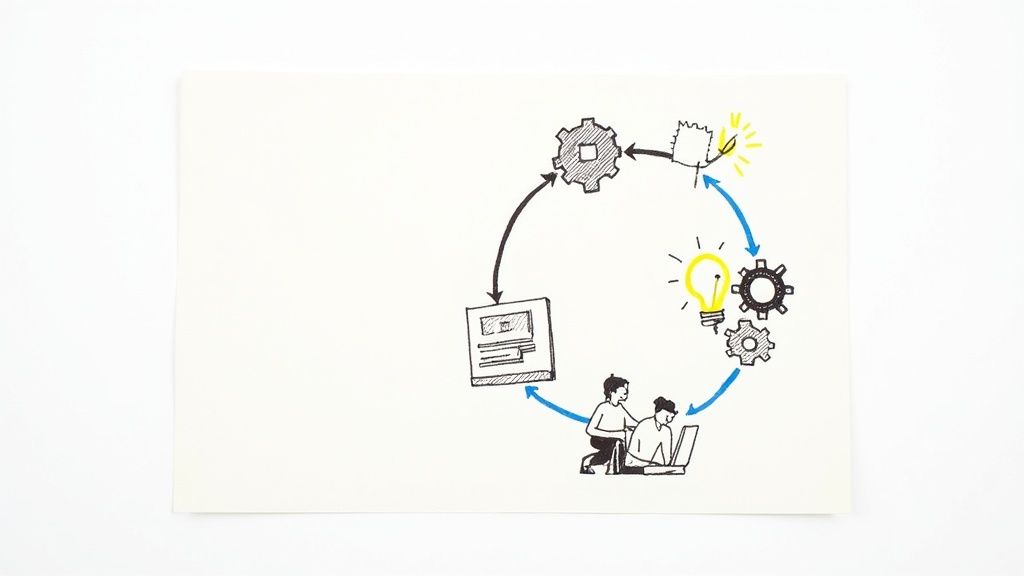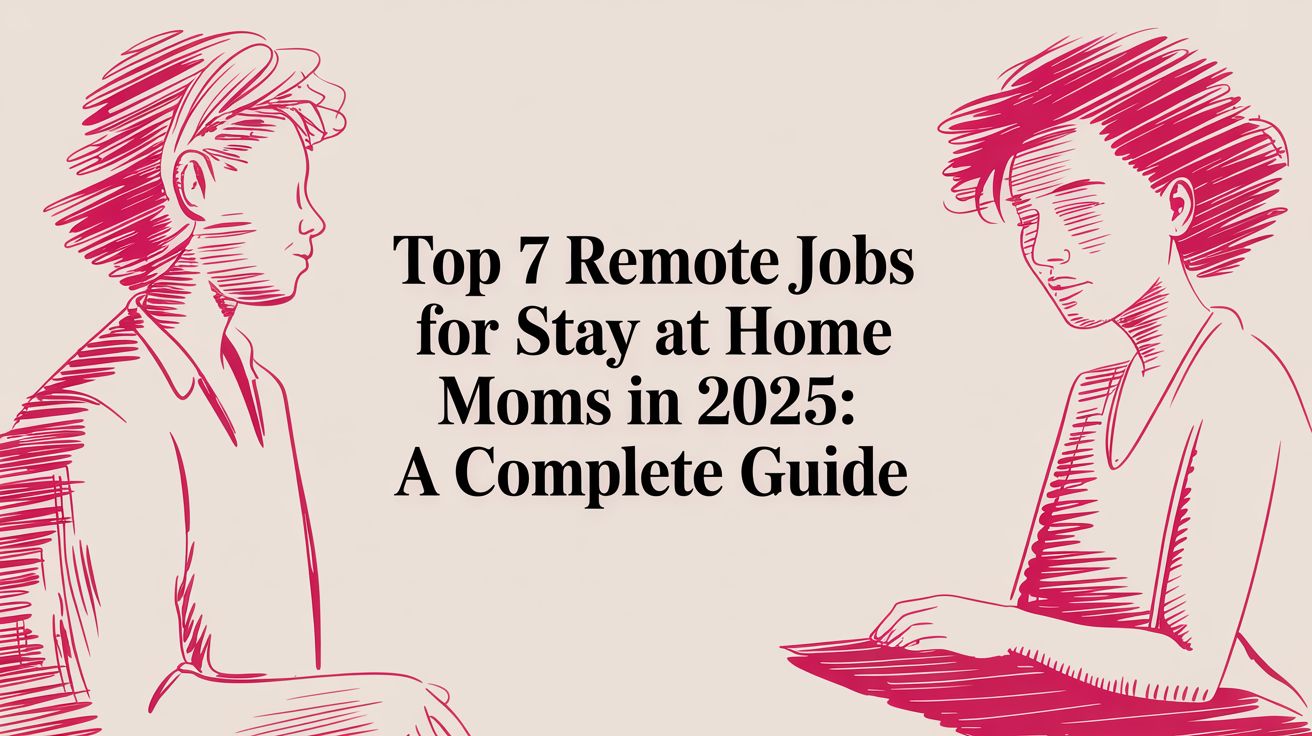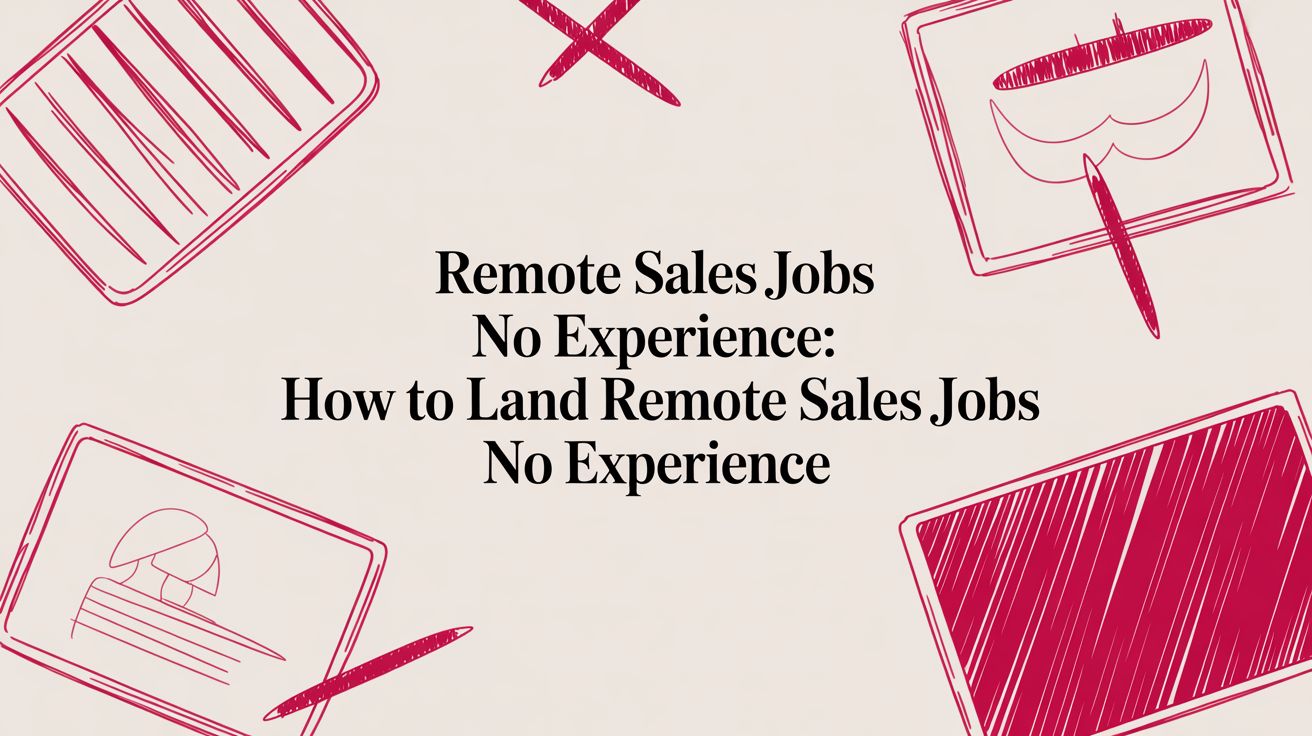How to be proactive at work: Boost Impact & Growth
Max
Being proactive at work is about making a fundamental shift in your mindset. It’s moving away from a ‘wait and see’ attitude and adopting a ‘plan and do’ approach. This means you’re not just reacting to what comes your way; you’re anticipating challenges, taking ownership before you’re asked, and always looking for ways to add more value. It’s the difference between being a task-doer and becoming a genuine problem-solver.
Understanding the Proactive Mindset

It’s easy to confuse being busy with being proactive, but they couldn’t be more different. Reactivity is living in a constant state of response, dealing with things as they pop up, which often leaves you feeling a step behind.
Proactivity, on the other hand, is about taking control. It’s the difference between constantly putting out fires and making sure they never start in the first place.
This is especially critical in remote settings, where self-direction is everything. A proactive remote employee doesn’t just wait for their next assignment. They spot potential roadblocks, suggest smarter ways to do things, and jump on projects that push the team’s goals forward. This doesn’t just boost your own output—it builds a massive amount of trust and quickly positions you as a leader. If you want to dive deeper, our guide on how to improve problem-solving skills is a great next step.
The need for this shift is bigger than you might think. Global employee engagement is stuck at a dismal 21%, which translates to a mind-boggling $438 billion in lost productivity every year. You can read the full breakdown of these employee productivity statistics on archieapp.co. This gap creates a huge opportunity for anyone willing to step up and be proactive to truly stand out.
A proactive approach is the single most important factor in career advancement. It demonstrates that you are not just an employee, but a strategic partner invested in the company’s success.
To really nail down this concept, let’s look at a side-by-side comparison.
Proactive vs Reactive Behavior at Work
Seeing the difference in black and white is the first step toward consciously changing your habits. This table breaks down common work scenarios to help you spot reactive tendencies and replace them with proactive behaviors.
| Characteristic | Proactive Approach (The Goal) | Reactive Approach (The Trap) |
|---|---|---|
| Planning | Anticipates future needs and prepares for them. “I’ve drafted a plan for next quarter’s project launch.” | Waits for tasks to be assigned. “What do you need me to do next?” |
| Problem-Solving | Identifies potential issues before they escalate. “I noticed a potential bug in the new feature and started a fix.” | Deals with problems only after they occur. “The system is down; now what do we do?” |
| Communication | Provides regular updates without being asked. “Just a quick update: I’m on track to finish the report by EOD.” | Only communicates when there’s a problem or when asked for an update. “Sorry, I’m running behind on that.” |
| Initiative | Seeks out opportunities for improvement. “I found a tool that could automate this process and save us 5 hours a week.” | Follows the existing process without question. “This is just how we’ve always done it.” |
| Ownership | Takes responsibility for outcomes, good or bad. “I made a mistake, but here’s how I’m going to fix it.” | Blames external factors or others for failures. “It wasn’t my fault; the instructions were unclear.” |
| Career Growth | Actively seeks new skills and responsibilities. “I’d love to get certified in project management. Can I take a course?” | Waits for training or promotion opportunities to be offered. “My manager hasn’t suggested any training.” |
Once you start recognizing these patterns, you can actively choose the proactive path. It’s about building a habit of forward-thinking that benefits not just the company, but your own career trajectory.
Anticipate Needs and Identify Opportunities
Truly proactive work kicks in when you stop waiting for tasks to land on your desk and start looking for what’s coming next. This is all about developing a kind of professional foresight—the ability to see around corners and get ahead of future needs before they become urgent problems.
It’s a skill that can transform you from a reliable team member into an indispensable one.
Think about it. Imagine a project manager who shows up to the kickoff meeting with a risk assessment already drafted. Or a designer who creates mockups for a new feature based on recent customer feedback, without being asked. They aren’t just doing assigned work; they’re actively shaping what comes next.
Look Beyond Your Immediate To-Do List
To get good at this, you need to zoom out from your daily checklist. The first step is getting a real handle on your team’s broader objectives and the company’s long-term vision.
- Study Project Roadmaps: Don’t just glance at the project roadmap; dig in. Pay close attention to what’s scheduled for the next quarter. Can you spot any potential bottlenecks or dependencies that no one’s talking about yet?
- Actively Listen in Meetings: Stop listening just for your own action items. Tune into the challenges and priorities other departments are discussing. This is often where the hidden opportunities are.
- Understand Customer Feedback: Whether you’re in a customer-facing role or not, find a way to stay plugged into what users are saying. Their pain points are the single best source of inspiration for real improvements.
In a business context, this kind of forward-thinking is crucial for growth. A great practical example is learning about building a sales pipeline that converts, as it’s a process entirely focused on identifying and nurturing future opportunities.
Foresight isn’t about predicting the future with 100% accuracy. It’s about being prepared enough to influence it. By spotting a potential issue early, you have the power to steer things toward a much better outcome.
When you start developing this forward-looking perspective, you can flag risks, propose solutions, and bring valuable ideas to the table—often before anyone else has even thought of them.
This is how you begin to show leadership, no matter your official title. Of course, a huge part of this is knowing how to prioritize tasks at work so you have the bandwidth to focus on these high-impact activities in the first place.
Master Your Time and Defend Your Focus

Let’s be honest: you can’t be proactive if you spend your entire day putting out fires. Taking back control of your schedule is the bedrock of proactivity, especially when you’re up against the constant digital noise we all deal with.
The goal here is to stop being a slave to your inbox and start being the architect of your day. This isn’t about working harder; it’s about carving out the mental space you need to think ahead and plan strategically. To do that, you need to implement effective priority management systems that help you see the difference between what’s actually important and what’s just shouting the loudest.
Create Blocks for Deep Work
One of the most powerful things you can do is start time blocking. Instead of letting your calendar become a chaotic mess of meetings, proactively schedule blocks of “deep work” for your most critical projects. Guard these appointments with yourself as fiercely as you would a meeting with your CEO.
This is non-negotiable in today’s work environment. Research shows that the average employee gets interrupted roughly every three minutes, and it can take over 23 minutes just to get back on track. By carving out protected time, you’re building a firewall against those disruptions and ensuring your most important work gets the undivided attention it deserves.
Protecting your focus is not a luxury; it’s a necessity for high-impact work. A day full of interruptions is a day full of reactive, shallow tasks. A day with planned deep work is a day you control.
This is even more critical in remote and hybrid setups. While you might dodge some office distractions at home, the digital interruptions are relentless. As we look at the 2025 workplace, it’s clear that the ability to master focus is what separates the top performers from everyone else.
To get a better handle on your schedule, check out our detailed guide on how to improve time management skills. This deliberate, proactive management of your own attention is what separates the merely busy from the truly productive.
Take Ownership and Communicate with Purpose

Being proactive is about more than just kicking off new tasks; it’s about seeing them through from start to finish. Genuine ownership means you’re the go-to person for your responsibilities, and you’re not waiting around for your manager to ask for a status update. This is how you build trust and manage expectations like a pro.
When you’re handling a long-term project, this means sending out regular, unsolicited updates. Don’t make stakeholders hunt you down for information. A quick weekly summary or a brief note when you hit a major milestone is all it takes to keep everyone in the loop and show you’ve got things under control.
Ownership also means stepping up when things don’t go as planned. Instead of trying to hide a mistake or hoping no one will notice, you tackle it head-on. A truly proactive professional admits the error early, clearly explains the impact, and—most importantly—walks in with a proposed solution already in hand.
Practice Purposeful Communication
Great communication is the engine that drives proactivity. Ambiguity is the enemy of progress, so get into the habit of clarifying instructions before you even think about starting.
Sending a quick message like, “Just to confirm, you need X done by Y, focusing on Z. Is that right?” can save you hours of rework down the line.
Taking a moment to confirm details isn’t a sign of uncertainty; it’s a mark of a professional who values their time and the project’s success. It prevents misunderstandings before they can cause delays.
This simple habit helps you build a reputation for reliability. When you actively manage your role’s impact through clear, concise communication, you’re not just completing tasks—you’re leading. If you want to dive deeper, our guide on how to improve communication skills at work has more strategies to help you connect with purpose.
Drive Continuous Improvement for Yourself and Your Team

True proactivity is when you start creating positive ripples that go beyond your own to-do list. It’s about becoming a catalyst for improvement—spotting the little friction points in daily workflows and, instead of just complaining, actually suggesting a practical fix.
This doesn’t mean you need to propose a massive, company-wide overhaul. The best changes are often small and tactical. Maybe you create a shared template for a recurring report that saves everyone an hour each month. Or perhaps you research a new tool that could automate a tedious manual process the team dreads.
Even something as simple as offering to host a quick 30-minute workshop to share a new skill is a massive proactive win. It shows you’re invested in elevating the entire team, not just hitting your own targets.
Focus on Personal and Team Growth
That same drive for improvement should also be turned inward. Proactively seeking feedback on your own performance is a game-changer for growth. Don’t just wait for your annual review to find out where you can get better. Our guide provides some great, non-awkward ways on how to ask for feedback at work and turn those insights into real action.
Taking the initiative to improve yourself and your team’s processes directly links your personal development to company success. It’s the ultimate win-win, making you an invaluable asset.
This connection between proactive employees and business results is huge. While leadership is obviously invested in boosting productivity, a 2025 survey found only 37% have seen tangible increases from their initiatives.
But for the companies that get it right, the benefits are clear: 72% report revenue growth and 63% see higher profitability. It just goes to show how much proactive people drive success. You can dive deeper into these productivity findings from Vistage.
When you consistently look for ways to refine processes and sharpen your skills, you show a commitment that goes way beyond just ticking off boxes. You’re not just doing the job—you’re actively making it better for everyone.
Common Questions About Being Proactive at Work
Stepping up and being proactive is great in theory, but I get it—navigating real-world office politics can feel like walking a tightrope. It’s easy to worry about coming off the wrong way.
Let’s break down some of the most common hurdles people face when they start trying to be more proactive.
How Can I Be Proactive Without Overstepping?
This is probably the #1 fear people have, and it’s a valid one. The secret isn’t to act unilaterally but to communicate your intent clearly. Being proactive doesn’t mean hijacking someone else’s project or making big decisions in a silo.
It’s all about identifying an opportunity and then presenting it as an idea.
For instance, instead of just quietly building a new reporting dashboard and surprising everyone, try approaching your manager first. Frame it as a solution that helps the team: “Hey, I noticed we spend a lot of time manually pulling numbers for the weekly report. I have an idea for an automated dashboard that could save us a few hours each week. Would you be open to me mocking up a quick draft to show you what I mean?”
This approach shows you’re thinking ahead while still respecting the existing chain of command. You’re offering a solution, not forcing one.
Being proactive is about adding value, not seizing control. Frame your initiatives as helpful suggestions or offers to assist. This invites collaboration instead of creating conflict, positioning you as a problem-solver, not a lone wolf.
What If My Proactive Efforts Seem Aggressive?
Tone and delivery are everything. There’s a fine line between being helpful and being critical, and it all comes down to how you frame your suggestions.
If you’re constantly pointing out flaws in other people’s work, yeah, that’s going to come across as aggressive. But if you focus on improving the process for the good of the team, it lands completely differently.
A simple trick is to use “we” instead of “you.” For example, instead of saying, “Your process for onboarding clients is inefficient,” try something like, “I was thinking about our client onboarding. What if we tried creating a shared checklist to make sure we never miss a step? It might help us all stay aligned.”
See the difference? That collaborative language turns a potential criticism into a team-oriented suggestion.
What Should I Do If My Efforts Go Unnoticed?
It’s definitely frustrating to put in extra effort only to feel like it vanished into thin air. The first step is to make your contributions visible, but without sounding like you’re bragging.
You have to be a subtle self-promoter.
- Share low-key updates: In a team meeting, you could casually say, “Just a quick update—that new documentation template I put together is now live in the shared drive for everyone to use.”
- Quantify your impact: When you get a chance to talk about your work, use numbers. It’s hard to ignore concrete results. For example: “That new automated report I set up has cut our weekly reporting time by 50%.”
If you still feel like your work is being overlooked, it might be time for a direct—but polite—conversation with your manager during your next one-on-one. Mention the initiatives you’ve taken and ask for their feedback. It shows you’re invested in your growth and helps your manager see the direct line between your actions and the team’s success.
Ready to find a role where your proactive mindset is celebrated? Remote First Jobs is the best job board for finding real remote-first roles from trusted companies. Find your next opportunity at https://remotefirstjobs.com.


